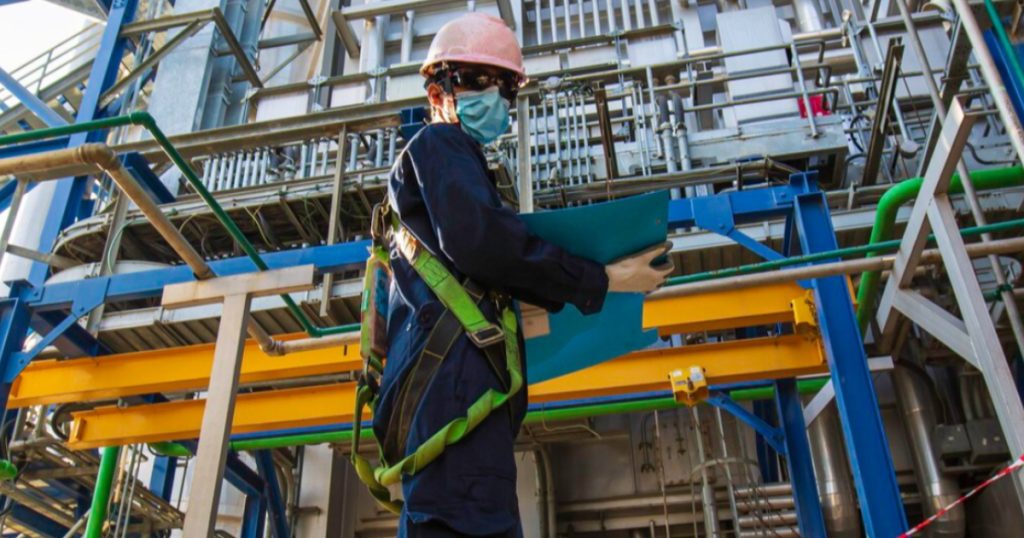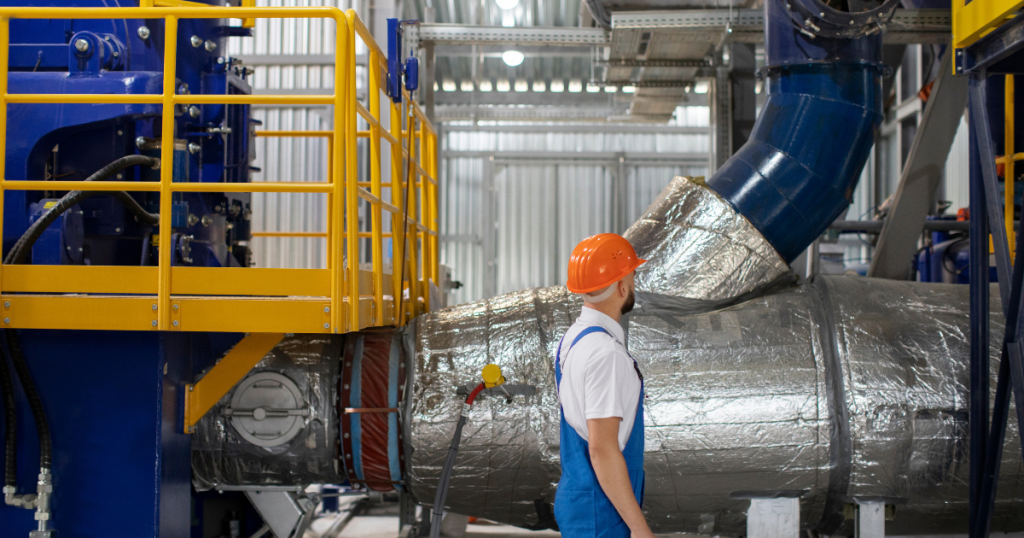Hydel Plant Erection forms the foundation of any hydroelectric project. It involves the precise installation of turbines, generators, auxiliary systems, and instrumentation to prepare the facility for efficient energy generation. A hydel plant’s performance and longevity depend heavily on this phase. Without proper commissioning, even the most technically advanced hydel plants can experience operational inefficiencies, equipment failures, and costly downtime.
This article provides a comprehensive guide on commissioning, maintenance, operational optimization, and practical strategies to ensure long-term industrial efficiency.

What is Hydel Plant Erection?
The process involves physically assembling all mechanical, electrical, and civil structures of a hydroelectric facility. It ensures that every component aligns correctly, functions properly, and integrates seamlessly with other systems. Key elements of this process include:
- Civil Construction – Dams, powerhouses, penstocks, spillways, and intake channels. Proper grading, foundation reinforcement, and structural integrity checks are critical.
- Mechanical Installation – Turbines, generators, pumps, valves, shafts, bearings, and auxiliary machinery. Precision alignment and calibration are crucial for efficiency.
- Electrical Setup – Transformers, switchgear, cabling, and control panels are installed according to industry standards.
- Instrumentation & Control Systems – Sensors, SCADA systems, emergency shutdown systems (ESD), and automation controls.
- Auxiliary Facilities – Water treatment, cooling systems, lubrication, and fuel-handling systems.
Each installation step must follow design specifications to prevent misalignment, vibration, or early wear.
Difference Between Erection and Commissioning
While the installation phase focuses on setting up equipment, the installation and commissioning phase ensures operational readiness. Commissioning tests, calibrates, and verifies that all mechanical, electrical, and control systems operate reliably under actual operating conditions.
- Erection – Installing equipment correctly
- Commissioning – Ensuring functional performance and safety
Why Commissioning is Crucial
The commissioning process validates that every system in a hydel plant is working correctly. Key benefits include:
- Safety Assurance – Prevents accidents, equipment failures, and environmental hazards.
- Operational Efficiency – Ensures turbines, generators, and auxiliary systems operate at maximum efficiency.
- Regulatory Compliance – Meets ISO, OSHA, and local environmental and safety standards.
- Reliability – Reduces downtime and operational interruptions.
- Documentation – Provides comprehensive records for maintenance and audits.
Skipping proper commissioning can result in misaligned turbines, faulty instrumentation, and inefficient energy production, leading to losses.
8 Key Steps for Hydroelectric Plant Setup and Commissioning
A structured approach ensures that all systems operate safely and efficiently. The following steps are critical:
1. Mechanical Completion Verification
After Hydel Plant Erection, every turbine, generator, shaft, bearing, valve, and auxiliary component must be thoroughly inspected. Teams check:
- Turbine and generator alignment
- Bearing integrity and lubrication systems
- Bolt torques, welding joints, and structural supports
- Auxiliary equipment installation
Engineers generate a punch list of discrepancies and rectify them before pre-commissioning. Accurate mechanical completion prevents later delays.
2. Pre-Commissioning Activities
Pre-commissioning prepares systems for operational verification. Key activities include:
- Flushing penstocks, pipelines, and channels to remove debris
- Cleaning turbines, generators, and intake systems
- Hydrostatic and pneumatic pressure tests
- Calibration of measurement instruments and sensors
Control loops and feedback mechanisms are verified to ensure accurate monitoring during full operational loads.
3. Electrical and Instrumentation Verification
The electrical and instrumentation systems are the nervous system of a hydel plant. This stage includes:
- Testing transformers, switchgear, and control panels
- Validating SCADA, emergency shutdown systems, and alarms
- Verifying interlocks and instrumentation loops
Accurate systems prevent operational errors and enhance safety.
4. Safety and Environmental Compliance
Safety checks are mandatory for commissioning. Tasks include:
- Conducting hazard identification workshops
- Emergency drills for operators
- Fire and gas detection tests
- Audits for environmental compliance
This ensures plant operation without risking personnel, equipment, or surrounding ecosystems.
5. Operational Performance Testing
Once engineers ensure safety, they conduct operational verification of the plant:
- Turbines, pumps, and generators are tested at no-load, partial-load, and full-load conditions
- Output parameters such as flow rates, pressure, voltage, and current are measured
- Auxiliary systems like gates, valves, and lubrication systems are evaluated
Engineers adjust, calibrate, or overhaul any equipment that requires attention at this stage.
6. Documentation and Operator Training
Documenting the commissioning process ensures regulatory compliance and operational continuity:
- Test results, inspection reports, calibration records, and certificates are compiled
- Manuals, vendor certifications, and as-built drawings are organized
- Operators are trained on operational procedures, safety protocols, and troubleshooting methods
Comprehensive documentation acts as a reference for future maintenance and audits.
7. Post-Commissioning Optimization
After initial commissioning, operational efficiency is further enhanced through continuous monitoring and optimization:
- Flow rates, turbine speed, and generator output are fine-tuned
- Control loops and interlocks are adjusted based on performance data
- Long-term operational trends are analyzed for predictive maintenance
This step ensures reliability, energy efficiency, and reduced downtime over the plant’s lifecycle.
8. Maintenance Planning
Maintenance planning is integrated with commissioning to extend equipment lifespan:
- Preventive Maintenance: Regular inspections, lubrication, and recalibration
- Predictive Maintenance: Vibration analysis, thermal imaging, and condition monitoring
- Major Overhauls: Bearings, shafts, turbines, and generators serviced based on performance data
- Control System Maintenance: SCADA and ESD updates and recalibration
Proper maintenance ensures the hydel plant continues generating energy efficiently for decades.

Common Challenges in Hydroelectric Plant Setup and Commissioning
Even with thorough planning, hydel plants may face:
- Turbine or generator misalignment
- Improper calibration of instrumentation
- Synchronization issues with grid power
- Variable water flow affecting efficiency
- Structural or civil defects in dams and penstocks
Hiring experienced Hydel Erection and Commissioning professionals mitigates these risks.
Case Study: Hydel Plant in Nigeria
A 300 MW hydel project in Nigeria faced operational delays due to turbine misalignment and control system errors. Experts in Hydel Plant Erection and Commissioning:
- Corrected turbine and generator alignment
- Calibrated all control systems and sensors
- Trained operators on safety and emergency procedures
Result: improved efficiency, reduced downtime, and reliable operations, highlighting the importance of professional commissioning.
FAQs
What is the commissioning process in a hydel plant?
It involves testing, calibration, and verification of mechanical, electrical, and control systems to ensure proper functionality.
What are the main steps of Hydel Plant Commissioning?
Civil construction, mechanical installation, electrical setup, instrumentation, pre-commissioning, operational testing, and documentation.
What is the difference between erection and commissioning?
Erection focuses on installation, while commissioning ensures that installed systems function safely and efficiently.
What is the lifespan of a hydel plant?
Typically 30–50 years with proper commissioning and routine maintenance.
Why is operator training important?
It ensures safety, prevents operational errors, and maximizes equipment life.
What are common problems during commissioning?
Misalignment, faulty instrumentation, synchronization errors, and variable water flow are common challenges.
What are erection charges for hydel plants?
Erection charges depend on project scale, type of turbines, civil works, and complexity of electrical and control systems.
Long-Term Reliability of Hydroelectric Plants
By combining precise Hydel Plant Erection, rigorous commissioning, and systematic maintenance, hydel plants can achieve safe, efficient, and reliable operations. Industry best practices include:
- Using specialized commissioning contractors
- Conducting structured operator training
- Implementing predictive and preventive maintenance schedules
- Maintaining detailed documentation for audits and regulatory compliance
Engaging experienced professionals ensures compliance, maximizes energy generation, and safeguards long-term investments.
This process is the cornerstone of hydroelectric power, forming the foundation for decades of industrial growth, sustainable energy, and operational excellence.
